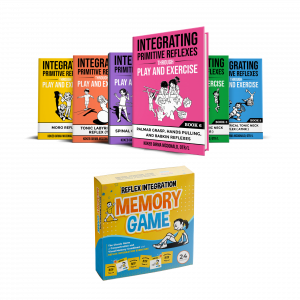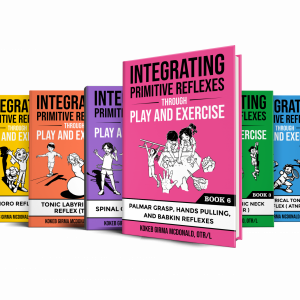A Guide for Therapists and Parents
Today, let’s dive into the Asymmetrical Tonic Neck Reflex (ATNR). Understanding this reflex is key to helping children thrive, so let’s break it down together!
What is the Asymmetrical Tonic Neck Reflex?
The Asymmetrical Tonic Neck Reflex (ATNR) is a primitive reflex that typically emerges around 18 weeks in utero and should integrate by 6 months of age. When a baby turns their head to one side, the arm and leg on that side extend while the opposite limbs bend (flex). Think of it as the “fencing position”—it’s the body’s way of helping babies develop hand-eye coordination and muscle tone.
Curious about the ATNR? Watch the video to discover more!
What are the benefits of the ATNR?
ATNR plays a important role in child development. It helps in:
- Hand-Eye Coordination: Facilitating the ability to track objects and reach for them.
- Muscle Tone and Balance: Contributing to muscle development and balance needed for later milestones like rolling and reaching.
- Cross-Pattern Movements: Laying the foundation for movements involving opposite sides of the body, essential for activities like crawling and walking, and more.
Signs of an Active Asymmetrical Tonic Neck Reflex Motor Pattern
If the ATNR motor pattern stays active past it’s integration period, it can lead to various challenges as the child grows. Here are some signs to look out for:
- Difficulty with Hand-Eye Coordination: Trouble with activities like catching a ball or handwriting.
- Poor Balance and Coordination: Struggling with tasks that require bilateral coordination, such as riding a bike.
- Challenges in Reading and Writing: Issues with visual tracking and copying from the board at school.
- Poor Posture: Difficulty maintaining a seated position without slumping or fidgeting.
What Can You Do?
If you suspect that your child or client has an active ATNR motor pattern, it’s important to seek support from trained professionals. Here are some steps to help:
- Observation: Note any behaviors or difficulties that may be related to an active ATNR. Keep a detailed log to share with therapists.
- Professional Evaluation: Connect with an occupational therapist who can evaluate your child and provide targeted interventions.
- Integrative Activities: Engage in activities that promote the integration of ATNR, such as crawling games, cross-body movements, and exercises that involve both sides of the body. Check out the Interactive Guide to the Asymmetrical Tonic Neck Reflex (ATNR) book or the video companion inside the RITP App!
- Consistent Practice: Regular, consistent practice of these activities can help in the gradual integration of the reflex.
Working with Professionals
In our Reflex Integration Through Play program, we offer comprehensive training and support for therapists seeking to enhance the development of their clients through primary functional movements. We provide consultations, group coaching, and a community where you can ask questions and share experiences. Everything is online, so you can easily access the resources you need.
Final Thoughts 💭
Dealing with the Asymmetrical Tonic Neck Reflex requires patience and a thoughtful approach. Each child is unique, so what works for one may not work for another. If you’re a therapist, continuously sharpen your skills and be mindful of how you engage with your clients. If you’re a parent, trust your instincts and seek guidance when needed. Together, we can help every child reach their full potential! 💖
Stay tuned for more videos and updates. Don’t forget to subscribe to our channel and reach out with any questions. We’re here to support you every step of the way!





